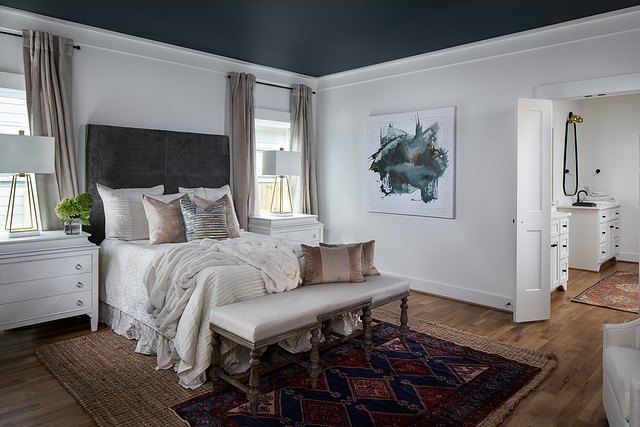Unveiling the Cool Elegance: Exploring Ice Cube Sherwin Williams
Introduction:
In interior design, color can transform spaces, evoke emotions, and set the tone for ambiance. Few possess the timeless allure and versatile appeal of Ice Cube Sherwin Williams among the myriad hues available. Renowned for its crisp, clean aesthetic and subtle sophistication, Ice Cube has captured the imagination of designers and homeowners alike. Join us as we delve into the captivating world of Ice Cube Sherwin Williams, exploring its origins, characteristics, and the myriad ways it can elevate any interior space.
The Origins of Ice Cube Sherwin Williams:
Ice Cube Sherwin Williams emerges from the illustrious palette of Sherwin Williams, a company synonymous with quality, innovation, and excellence in paint and coatings. Sherwin Williams, founded in 1866, has remained at the forefront of the industry, continually pushing the boundaries of color technology and design. With its timeless elegance and understated charm, Ice Cube is a testament to Sherwin Williams’ commitment to delivering hues that resonate with contemporary sensibilities while retaining a sense of classic refinement.
Characteristics of Ice Cube Sherwin Williams:
At its essence, Ice Cube is a delicate balance of purity and warmth, evoking visions of pristine winter landscapes and crystalline clarity. This soft, whispery white possesses subtle undertones that lend depth and dimension to any space it inhabits. With a hint of gray and a touch of blue, Ice Cube exudes a sense of tranquility and serenity, making it an ideal choice for creating serene retreats and cozy sanctuaries.
One of the most compelling features of Ice Cube is its versatility. Whether used as a primary wall color, trim accent, or as a backdrop for bold pops of color, Ice Cube adapts effortlessly to a myriad of design styles and aesthetics. From modern minimalist interiors to classic traditional spaces, Ice Cube is a versatile canvas upon which designers can unleash creativity.

The Impact of Ice Cube in Interior Design:
In interior design, Ice Cube holds the power to transform spaces, infusing them with a sense of lightness, airiness, and sophistication. In bedrooms, Ice Cube creates a serene oasis conducive to relaxation, while in living areas, it serves as a neutral backdrop, allowing furnishings and accessories to take center stage.
Ice Cube lends a sense of cleanliness and purity in kitchens and bathrooms, making it the perfect choice for brightening up these often-utilitarian spaces. When paired with natural materials such as wood, stone, or metal, Ice Cube adds an element of contrast and visual interest, creating a harmonious balance between warmth and coolness.
Tips for Using Ice Cube Sherwin Williams in Interior Design:
When incorporating Ice Cube into your interior design scheme, consider the following tips to make the most of its timeless elegance:
1. Layer Shades of White: Experiment with different shades and textures of white to create depth and dimension within your space. Pair Ice Cube with warmer whites for a cozy, layered look or with crisp, bright whites for a clean, modern aesthetic.
2. Embrace Contrast: Use Ice Cube Sherwin Williams as a backdrop for bold pops of color, metallic accents, or richly textured furnishings to create visual interest and drama within your space.
3. Play with Light: Consider the natural light within your space and how it interacts with Ice Cube. Ice Cube will appear bright and airy in rooms with ample natural light, while in darker spaces, it may take on a softer, more subdued tone.
4. Consider the Finish: Choose the right finish for your project, whether matte, eggshell, satin, or semi-gloss. Each finish offers a different level of sheen and durability, so consider the specific needs of your space when making your selection.
5. Test Before You Commit: As with any paint color, it’s essential to test Ice Cube in your space before making a final decision. Paint swatches on your walls and observe how they look at different times of day under various lighting conditions.
Exploring the Subtleties of Ice Cube Sherwin Williams:
While Ice Cube may appear as a simple white at first glance, its subtleties reveal themselves upon closer inspection. Unlike stark, clinical whites, Ice Cube’s softness and warmth make it exceptionally inviting. Its slight undertones of gray and blue lend a sense of depth and complexity, ensuring it never feels flat or one-dimensional.
One of the most remarkable aspects of Ice Cube is its ability to adapt to its surroundings. In rooms flooded with natural light, Ice Cube takes on a luminous quality, reflecting and enhancing the sun’s rays to create a bright, airy atmosphere. In contrast, Ice Cube exudes a gentle glow in dimly lit spaces, imbuing the room with a sense of cozy intimacy.

Creating Tranquil Retreats with Ice Cube:
In today’s fast-paced world, creating spaces that foster tranquillity and relaxation is more important than ever. Ice Cube provides the perfect foundation for crafting serene retreats where stress melts away, and peace prevails. Ice Cube creates a serene sanctuary in bedrooms conducive to restful sleep and rejuvenation. Pair it with soft, luxurious bedding, plush carpets, and understated furnishings to create a cocoon-like environment that invites relaxation.
Enhancing Architectural Details with Ice Cube Sherwin Williams:
Ice Cube isn’t just a wall color—it’s a design element in its own right. When used to highlight architectural details such as crown moulding, wainscoting, or built-in cabinetry, Ice Cube adds a touch of elegance and sophistication to any space. Its clean, crisp hue draws attention to intricate millwork and craftsmanship, elevating the room’s overall aesthetic.
Pairing Ice Cube with Complementary Colors:
While Ice Cube is stunning, it truly shines when paired with complementary colors. For a fresh, feminine look, consider pairing it with soft pastels such as blush pink, pale blue, or mint green. For a dramatic effect, juxtapose Ice Cube with rich jewel tones such as emerald green, sapphire blue, or amethyst purple. The contrast between Ice Cube’s excellent neutrality and these bold hues creates a dynamic visual impact that is both striking and sophisticated.
The Timeless Appeal of Ice Cube:
In a world where trends come and go, Ice Cube stands the test of time. Its classic elegance and timeless appeal ensure it will never go out of style, making it a wise investment for any design project. Whether used in a contemporary loft, a traditional farmhouse, or anything in between, Ice Cube adds a touch of sophistication and refinement that transcends fleeting fads and passing trends.
Exploring the Versatility of Ice Cube:
One of the most remarkable aspects of Ice Cube is its remarkable versatility. This shade of white isn’t confined to any particular design style or aesthetic—it can effortlessly adapt to various environments, from modern and minimalist to traditional and eclectic. In a contemporary setting, Ice Cube is a sleek backdrop for sleek, streamlined furnishings and bold, geometric accents. Its clean lines and subtle undertones provide the perfect canvas for showcasing cutting-edge design elements and avant-garde decor.
Conversely, Ice Cube adds a touch of modernity and freshness in a more traditional space, breathing new life into classic design elements and timeless furnishings. Paired with rich woods, sumptuous fabrics, and ornate details, Ice Cube creates a sense of balance and harmony, bridging the gap between old and new.
Creating Depth and Dimension with Ice Cube:
While some may dismiss white as bland or uninspired, Ice Cube Sherwin Williams proves that this classic hue offers plenty of depth and dimension. When used strategically, Ice Cube can create a sense of visual interest and complexity within a space. Consider layering different shades of white and incorporating a variety of textures and finishes to add depth and dimension to your design.
For example, pair Ice Cube with creamy off-whites, soft grays, or warm beiges to create a subtle tonal palette that feels rich and layered. Add interest with textured fabrics, such as linen, wool, or velvet, and incorporate tactile elements like natural wood, stone, or metal to create visual contrast and depth.
Maximizing Space with Ice Cube Sherwin Williams:
Ice Cube can work wonders in smaller or more compact spaces to maximize the sense of light and space. Its clean, crisp hue reflects light beautifully, making rooms feel larger, brighter, and more open. Use Ice Cube on walls, ceilings, and trim to create a seamless, uninterrupted flow of color that visually expands the space.
To further enhance the illusion of space, incorporate mirrors, glass accents, and reflective surfaces to bounce light around the room and create a sense of airiness and openness. Keep furnishings and decor minimal and uncluttered to maintain balance and harmony within the space.
Ice Cube in Commercial Spaces:
While Ice Cube is often associated with residential interiors, its versatility and elegance make it a popular choice for commercial spaces. In offices, retail stores, and hospitality venues, Ice Cube creates a sense of professionalism, cleanliness, and sophistication that resonates with clients, customers, and guests alike.
In corporate settings, Ice Cube can help to create a calm, focused atmosphere that promotes productivity and concentration. In retail environments, it provides a neutral backdrop that allows merchandise to take center stage. At the same time, in hospitality spaces, it creates a sense of tranquility and relaxation that encourages guests to linger and unwind.
In Conclusion:
Ice Cube Sherwin Williams is a shining example of the power of color to transform spaces and evoke emotion. With its timeless elegance, versatility, and understated charm, Ice Cube has earned its place as a beloved staple in the world of interior design. Whether used as a primary wall color, trim accent, or backdrop for bold design statements, Ice Cube can elevate any space, infusing it with lightness, airiness, and sophistication.

